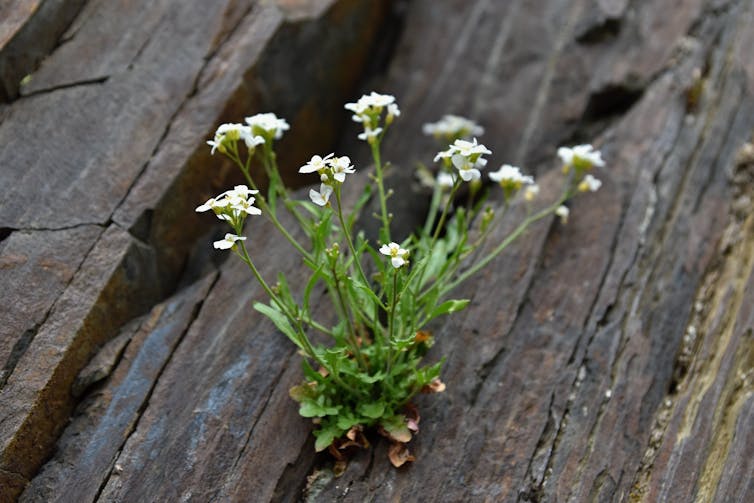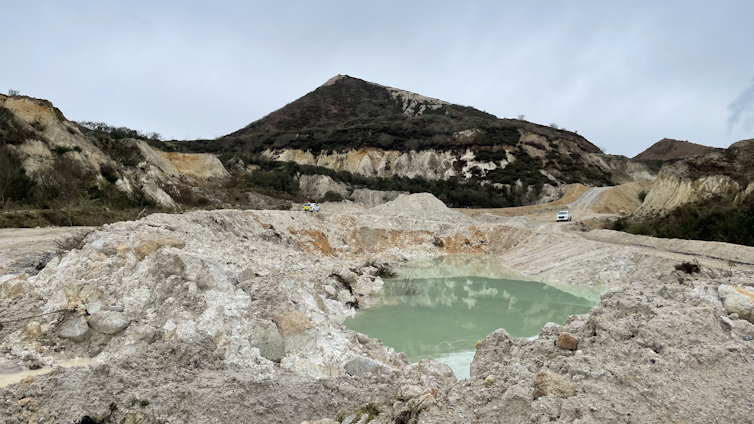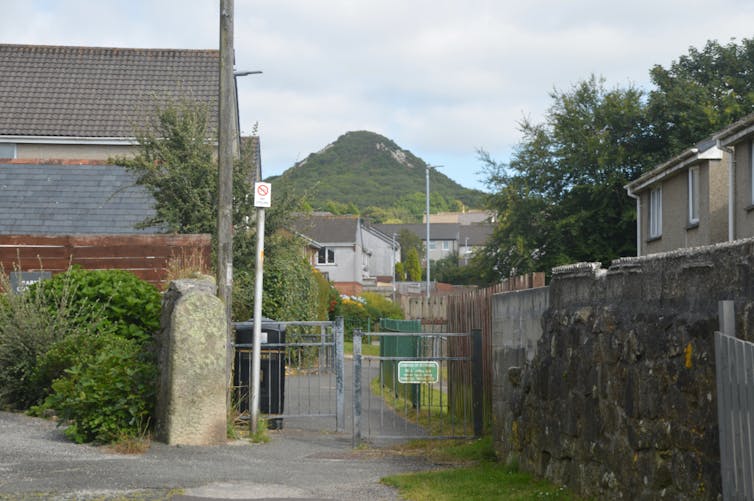Source: The Conversation – UK – By Will Shüler, Vice-Dean of Education and Senior Lecturer, School of Performing and Digital Arts, Royal Holloway University of London
Warning: this article contains spoilers.
Indhu Rubasingham has begun her tenure as the director of the National Theatre with her production of Bacchae, playwright Nima Taleghani’s new version of Euripides’ ancient Greek tragedy. A play about the Greek god of theatre, it’s a bold choice that makes a clear statement about Rubasingham’s thoughts on the power of the theatre and what audiences might expect under her leadership at the National.
Dionysus and his celebrants, the Bacchae, are travelling west from Asia to Thebes, where the god’s cousin Pentheus rules as king. When Pentheus refuses to acknowledge Dionysus’ divinity, the god exacts revenge by driving the women of Thebes – including Pentheus’ mother, Agave – into divine madness.
The women join the Bacchae on the mountains outside of Thebes to celebrate his rites by drinking wine, hunting and participating in orgies. In disguise as a human, Dionysus leads Pentheus – dressed as a woman to blend in with the Bacchae – to retrieve his mother. In the grip of this divine madness Agave mistakes her son for a lion, and tears off Pentheus’ head.
She triumphantly returns to Thebes to show off her prowess, only to discover in a moment of devastating clarity what she has done. Meanwhile, a rift within the Bacchae themselves has emerged from internal disagreements about the needs of their group and how far Dionysus is taking things.
Tragedy and contemporary concerns
The production employs a range of different performance styles. The opening scene of Bacchae is a powerful, rhythmically chanted choral ode performed as rap. The introduction of Dionysus is done as a showy musical theatre number, and for the first half of the play Pentheus is performed in the style and costume of a panto villain. Perhaps these different styles are intended to show the versatility of drama, as a nod to doing a play about the god of theatre. In practice, they jar with each other, falling a bit flat.
Starting an artistic directorship with a Greek tragedy could be criticised for contributing to the idea that theatre began in 6th-century BC Athens. While the performance traditions of ancient Greece have been very influential in the course of theatre history, there are several theatrical traditions which predate this, such as those in China and Africa.
That said, Taleghani’s adaptation takes the story in a direction that is clearly tapping into contemporary concerns such as decolonising culture, feminism, race and LGBTQ issues. At times, however, these interventions are overly didactic or treated superficially.
For example, towards the end of the play, some of the Bacchae decide that they would like to make a home in Thebes, rather than continue to travel and spread the word of Dionysus. Dionysus advocates for this to Pentheus and does not settle for the king’s offer of a sanctuary on the outskirts of Thebes – he wants the Bacchae to be integrated within the city.
But because this scene happens just five minutes before Pentheus’ beheading, this dialogue feels like an underdeveloped thread, shoe-horned into the plot to make an overt political statement about migration and asylum.
Had this been a nuanced and developed thread throughout, like the Young Vic production of Aeschylus’s Suppliants (2017) in which thoughtful connections between the suppliant women and contemporary asylum seekers are developed from the beginning, it might not have come across as virtue-signalling.
Greek tragedy was intended to educate its audience. But rather than specifically making a political point, it presented challenging scenes intended to provoke reflection on social and cultural issues of the time.
This happens in the National Theatre’s Bacchae when it is most subtle in its politics. Kera, leader of the zealous Bacchae breakaway faction, claims Thebes, Dionysus’ motherland, as a religious promised land. And she is willing to resort to extreme violence in order to take it.
Perhaps because of the sensitivity around the war in Gaza, the topic of religion and violence is folded into Bacchae in a subtle, more nuanced way. This choice entrusts the audience to draw their own connections between the world of the play and world we live in, rather than having a particular stance clearly outlined for us.
One overt critique that lands well comes at the end of the play, when the leader of the Bacchae, Vida (brilliantly performed by Clare Perkins), comments: “Perhaps there was always a flaw in our plan; the liberation of women … being led by a man”. This allows the audience to reflect on Dionysus as leader of the Bacchae’s drive for freedom since the start of the play. Indeed, it calls into question the flaw in the narrative dating back to Euripides’ original in BC405 and many other versions staged since.
In many ways Bacchae is meta-theatrical, meaning it draws attention to the fact that it is a piece of theatre. Several times Vida tells the audience what theatre can and should do. This rings clearest at the end of the play, when her words read as Rubasingham’s stance as new director: “After the god of drama steps in, ur Royal National Theatre shit’ll never be the same”.
But the play shines most when instead of telling us what theatre can do, it just actually does it.
Bacchae is at the National Theatre until November 1
Looking for something good? Cut through the noise with a carefully curated selection of the latest releases, live events and exhibitions, straight to your inbox every fortnight, on Fridays. Sign up here.
![]()
Will Shüler does not work for, consult, own shares in or receive funding from any company or organisation that would benefit from this article, and has disclosed no relevant affiliations beyond their academic appointment.
– ref. Bacchae is bold first choice for National Theatre’s new director – https://theconversation.com/bacchae-is-bold-first-choice-for-national-theatres-new-director-266410















